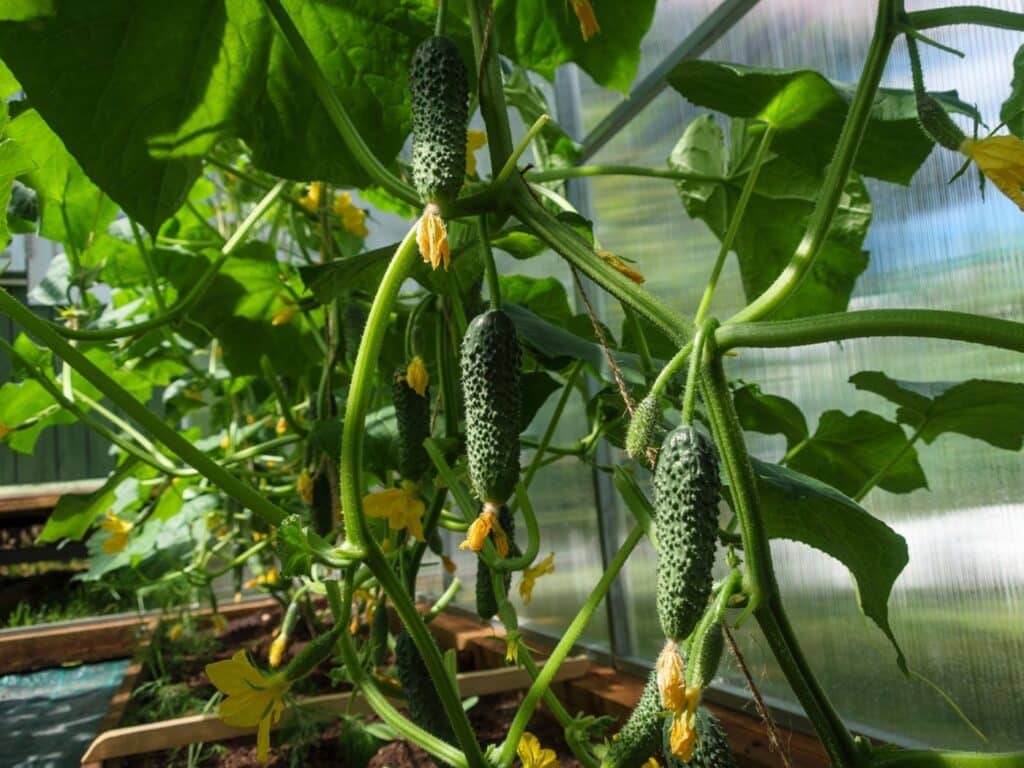Cucumbers (Cucumis sativus) are among the best vegetable plants to add to your vegetable garden. It is very easy to grow cucumbers and you can make a huge variety of delicious and healthy salads from this produce.
Cucumber plants can be paired with companion plants like root vegetables, sunflowers, peas, beans, lentils, oregano, and many other fragrant herbs. Cucumber companion planting offers many growth benefits – if you pair the plants correctly.
In this guide, we will look at some of the companion planting varieties to pair up with cucumbers and offer insight into how each of these plants will benefit your cucumber growth.
Benefits of Companion Planting
Many professional gardeners do cucumber companion planting because it offers numerous benefits. Here is a quick look at why so many love to pair cucumbers with other vegetable and herb species.
Combat Pest Infestations
Companion planting is becoming more common in organic gardening because it allows gardeners to keep their vegetation pest-free without chemical pesticides. Farmers or gardeners achieve this by adding plants that repel specific pests. These plants repel pests by secreting an unpleasant odor or luring predatory insects to the garden to combat common cucumber pests.
Attract Pollinators
Cucumbers need to be pollinated to produce lots of fruit. Without pollinators, your cucumber harvest will fail to produce lots of fruit. By adding more aromatic herbs to your garden, you can lure a lot more pollinating insects like honey bees to your garden. This can increase your vegetable yields and make your garden look more vivid.
Maximize Yields Per Square Meter
Pairing certain vegetables together in the same garden is a good way to get more yields from the same space. This is achieved by pairing produce together that grows harmoniously without depriving each other of nutrients. Certain pairings can also improve soil nutrients, benefiting the growth and production of all the vegetables you choose to include in the garden patch.
Living Trellis
Taller plant varieties like sunflowers can act as a living trellis that cucumber vines can climb. This type of combination will reduce your labor intensity since you won’t have to set up a wire trellis and it can boost yields since cucumber fruits will dangle off the ground and out of the reach of ants.
Weed Suppression
The cucumber plant already acts as ground cover to keep weeds from sprouting because these plants emit allelochemicals that inhibit the growth of other plants. But adding more vines and stalky plants to your soil can help further suppress weeds. With more plants in your garden bed, there will be less weeding, and you can save more space.
What to Plant With Cucumbers
It is always better to do a bit of research on different companion plants and the effects they might have on your cucumbers before you add them to the garden bed. Some companion plants are better for attracting beneficial insects while others might be better for preventing diseases and infestations.
Let’s take a quick look at the best neighboring plants for your cucumber garden bed.
The Overall Best Companion Plants for Cucumbers
Some companion plants offer much more benefits to your cucumber plants than others. The best plants to select are the ones that offer more than one purpose. The following plants we are going to discuss outrank all the other plants because they will help your cucumber’s growth in more than one way.
Dill
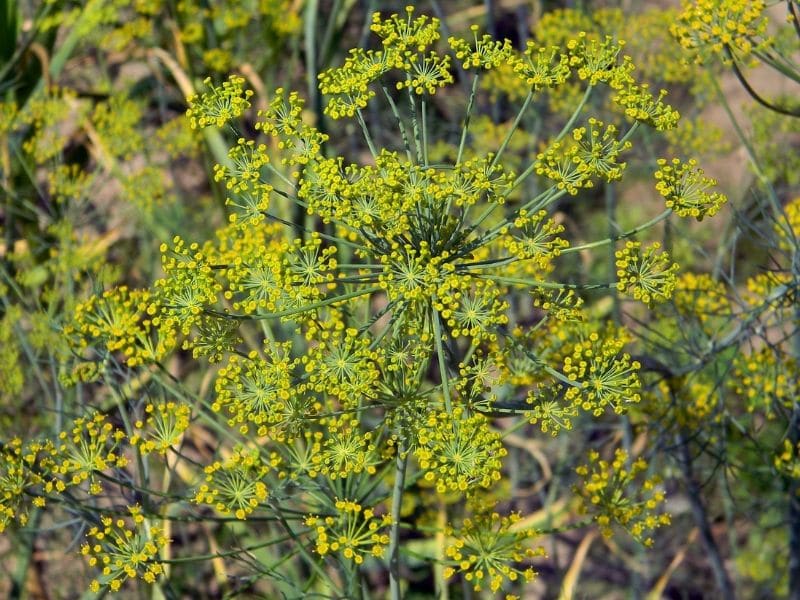
The dill plant (Anethum graveolens) is an ideal companion plant because it can enhance the growth of your cucumbers and attract beneficial insects.
When dill blooms, it will attract insects like wasps known to attack cucumber beetles. It also attracts ladybugs, which can help manage aphids. The blooms will also attract pollinating insects, boosting your cucumber yields.
This herb will stand out above your cucumber vines because it reaches a height of 40-60 cm (16-24 inches). The bushy plant creates delicate edible thread-like leaves, and it produces numerous tiny yellow flowers. Dill also produces bitter-tasting seeds.
This useful plant has many uses. Frenchmen prefer to use dill as a flavoring or preservative for pickles while Americans prefer the herb as a garnish. The seeds are often used in stews and soups. Oil can also be extracted from the leaves and seeds to produce soap.
Dill is an annual plant that should be removed after it blooms or bears seeds. Because of this, it can easily be planted amongst your cucumber plants and harvested when the cucumbers are ripe.
Borage
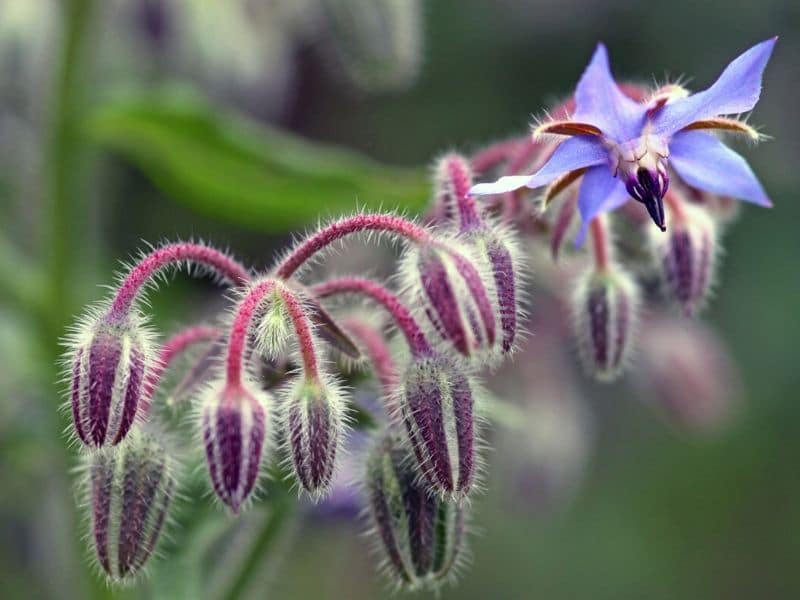
Borage (Borago officinalis) is often called the starflower and is an annual herb that does very well with cucumbers. This herb is one of our top picks because it offers many benefits. Borage will enhance the growth of your cucumber vines and fruits because it acts as bioaccumulation. The deep root system of this plant will draw minerals deep from the soil and make these nutrients available to cucumbers.
When this herb blooms, it attracts beneficial insects that will help fight off pests like cabbage worms, armyworms, and wireworms.
The purple flowers of this herb also produce nectar, which attracts bees. These beneficial insects will pollinate your cucumbers so you can get lots of fresh produce from your garden.
You can also use borage as a vegetable to produce sauces and soups or this herb as a filling in pasta. Some also use this herb as a garnish on certain traditional beverages and in Persia, the herb is often used to produce borage tea.
Since this bushy plant can grow quite large, it is usually best to establish it at the starts and ends (top and bottom) of your cucumber rows.
Sunflowers

We will also include the common sunflower (Helianthus annuus) to our list because this handy plant can save you a lot of time and effort.
Sunflowers are terrific companion plants with cucumber plants because they can be used as natural trellises for the cucumber plants to grow on. This can keep your cucumbers off the ground and away from pests and diseases. It also makes it much easier for you to harvest those healthy cucumbers when they are ready.
These flowers can also offer a little bit of shade to your cucumbers and will keep them from becoming dried out in hot weather.
Sunflowers attract many beneficial insects to vegetable gardens, which may increase your cucumber yields since there will be plenty of small bugs to assist with pollination.
It can also be a useful plant for consumption because it produces many tasty sunflower seeds.
To grow sunflowers with cucumbers, you need to establish them two weeks before the cucumbers. This will give your sunflower stalks time to grow before the vines start climbing up on them.
The Best Cucumber Companion Plants to Attract Beneficial Insects
It is always sad to see insect pests devour the vegetables you spent so much time growing. A great and natural way to eliminate these pests is by growing companion plants that will help repel pests. Here is a quick look at some of the best pest-repelling plants to grow with your cucumbers.
Nasturtiums

Nasturtiums (Tropaeolum majus) is a plant that is often used for decorative purposes. But this edible plant is very useful to have in your cucumber garden.
This plant is great for repelling insects like cucumber beetles and squash bugs, and they attract beneficial insects that can fight off aphids. The bright yellow and orange flowers attract pollinating insects to your vegetable garden.
To top it off, these beautiful plants can double as garnish in food dishes. They are delicious in salads, and these aromatic herbs can be used for medicinal purposes.
Nasturtiums are visually appealing, and it can be tempting to grow them all over your cucumber garden. Most gardeners, however, recommend you place these a little away from your cucumber plantation. This is because these bushy plants produce climbing vines that can overpower cucumber plants.
Nasturtiums can also lure destructive insects away from cucumbers but you will need to clear these plants from your garden if they become infested.
Onions
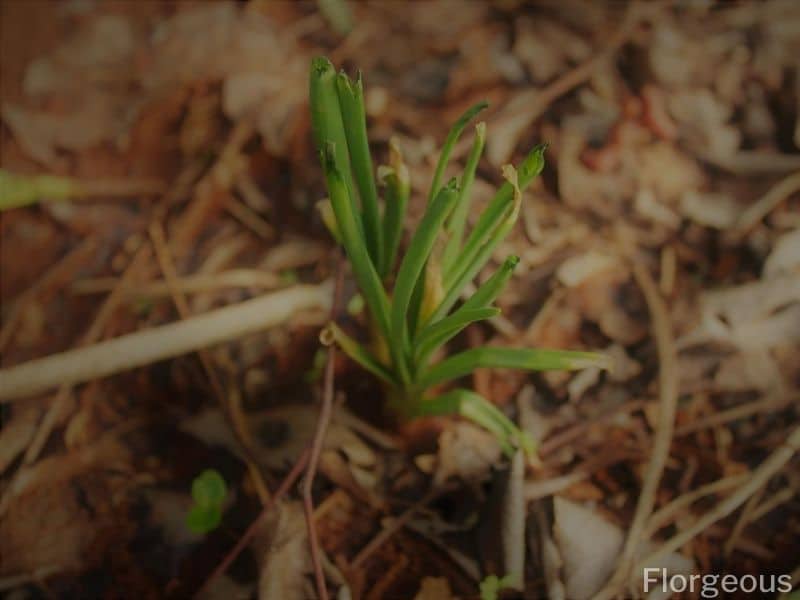
The pungent smell of onions (Allium cepa) does a great job of repelling all sorts of pests. The strong scent of these plants naturally wards off Japanese beetles and rabbits.
This is also one of the good companion plants for cucumbers since it won’t interfere or compete with the cucumber plant. Onions grow low to the ground and produce shallow roots.
Onions are a favorite in every vegetable garden because it has so many different uses. You can use this product to enhance the flavor of many dishes and it can be consumed cooked, raw, or dried to produce a spice.
You can grow these plants in rows around your trellised cucumber plants. There should be a 6 to 8-inch space between the onions and cucumber plants so they can have plenty of space to develop large bulbs. This also keeps the cucumber vines from smothering your onions.
Calendula
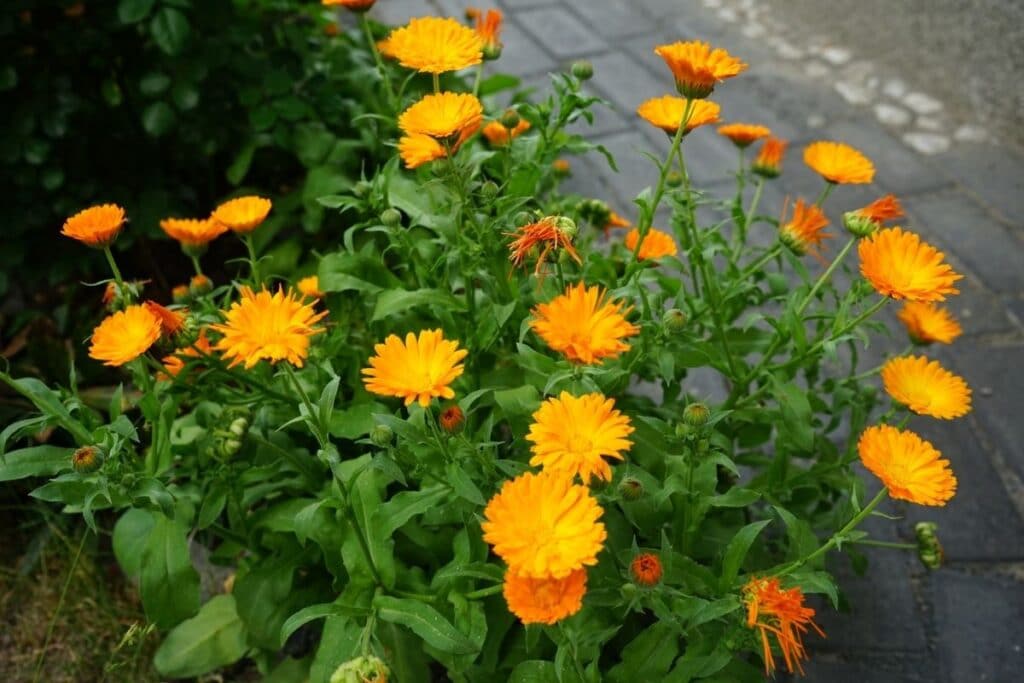
Calendula (Calendula officinalis), also referred to as pot marigold, is another superb companion plant if you want to keep your cucumbers pest-free without using chemical pesticides.
Pot marigold protects vulnerable crops from aphids because they attract plenty of hoverflies that feed on these sap-seeping insects. Parasitic wasps will also flock to your garden to consume cucumber beetles that might threaten your garden.
This annual plant with its bright orange blooms and short stature will also make your veggie garden look a lot more vibrant and it will attract lots of pollinating insects to your cucumber patch.
This flowering plant does reach a higher height than cucumbers and will offer that little bit of extra shade that sun-sensitive plants might need to survive. It is thus best to line up calendulas along your cucumber vines.
These aromatic herbs aren’t too tasty to eat but they can be used in teas and extracts for medicinal purposes.
Best Companion Plants to Improve Yields
Certain companion plants are terrific for improving soil nutrients so your cucumbers can grow faster and carry more produce. Other plants just grow well alongside cucumbers because they won’t disrupt your cucumbers so you can get maximize your garden space.
Up next, we are going to take a peek at the best cucumber companion plants to include in your garden if you want to get the most yields out of each garden bed.
Root Vegetables

Certain root vegetables like radishes, beets, and carrots are terrific companion plants for cucumbers because they will help you maximize your garden space without impacting the growth of the cucumbers.
These root vegetables don’t offer additional benefits like pest control or soil-enhancing properties but they can safely co-exist with cucumbers because they take up minimal space above the ground. The cucumber vine can safely expand and produce lots of juicy pickling cucumbers without being interrupted.
Some root vegetables like beet are also helpful for loosening up the soil so the cucumber plant can easily take and grow.
It is usually recommended to sow carrots and beets at the same time a couple of inches away from the cucumber trellis. By harvest time, all of these root veggies could be ready and you will be able to make all sorts of delicious stews, salads, and meals.
Pole Beans and Bush Beans

Pole beans (Phaseolus vulgaris) and bush bean legumes (Phaseolus coccineus) are good cucumber companion plants because they can restore the nitrogen levels in your soil without taking up too much light and space above the ground.
These green beans can restore your soil nutrients thanks to a unique relationship these plants have with soil-dwelling bacteria.
Adding bean plants to your cucumber garden is also a good way to maximize your garden space since they can be grown in the same garden bed without hindering the growth of your pickling cucumbers or various other plants.
When planting cucumbers, you should leave a minimum of 6 inches between your bean plants and cucumber plants. This will offer plenty of space for bush beans to grow and gives you enough room to create a trellis for your pole beans.
These legumes are healthy vegetables that can be used for making all sorts of delicious foods like stews or soups. It certainly is one plant you need if you enjoy healthy living.
Tomatoes

The companion plant, tomatoes (Solanum Lycopersicum) can also be a good vegetable to include in your garden if you want to get more produce from the same garden bed. Tomatoes have the same basic growing and watering needs as cucumbers. This is one of the main reasons you might want to grow them together.
Some also believe that tomatoes can help lure pollinating insects to your garden which might help increase your cucumber yields.
The biggest issue you will face when pairing these plants is space. Tomato vines and shrubs can both take up a lot of space. As with your cucumbers, they might also need quite a bit of sunlight.
When companion planting with cucumbers and tomatoes, you should be careful to arrange the trellised cucumbers and tomatoes so they won’t intertwine too much or so each plant will receive adequate sunlight.
Worst Companion Plants for Cucumbers
While many plants grow well together with cucumbers, some that just don’t fare well in the same garden. Here is a quick look at some of the plants that you should never add to the same garden lane as cucumbers.
Potatoes
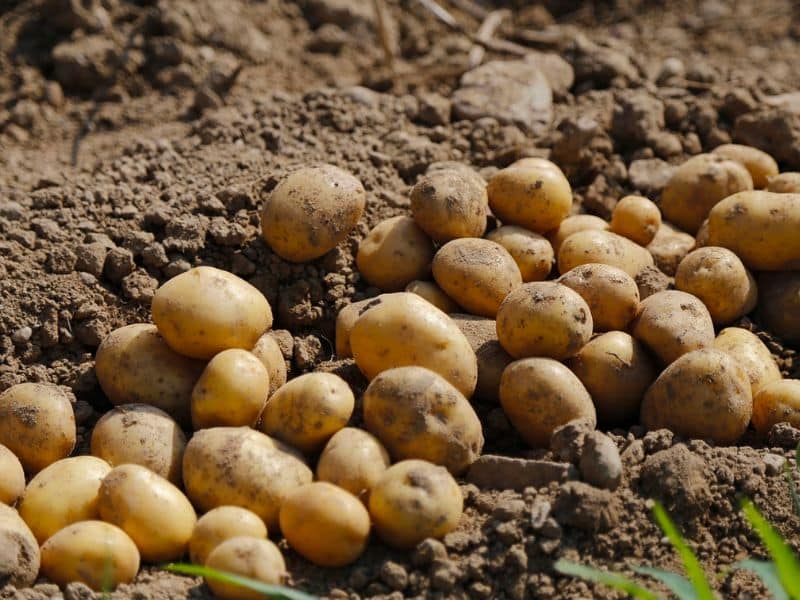
Potatoes (Solanum tuberosum) are some of the worst plants to grow along with cucumbers. There are two main reasons for this.
Firstly, cucumbers are known to encourage potato blight. This fungal-like pathogen can ruin your potatoes and result in fruitless efforts.
Secondly, potatoes and cucumbers both require a lot of the same nutrients to develop. These plants will quickly start working against one another and will result in a poor cucumber crop.
Sage

Sage (Salvia officinalis) is another plant that you shouldn’t add to your organic garden. Many gardeners label sage and cucumbers as natural enemies.
This herb can affect the growth of your cucumbers and it is believed that the powerful aromatic scent of sage can affect the taste of the cucumbers.
Mint
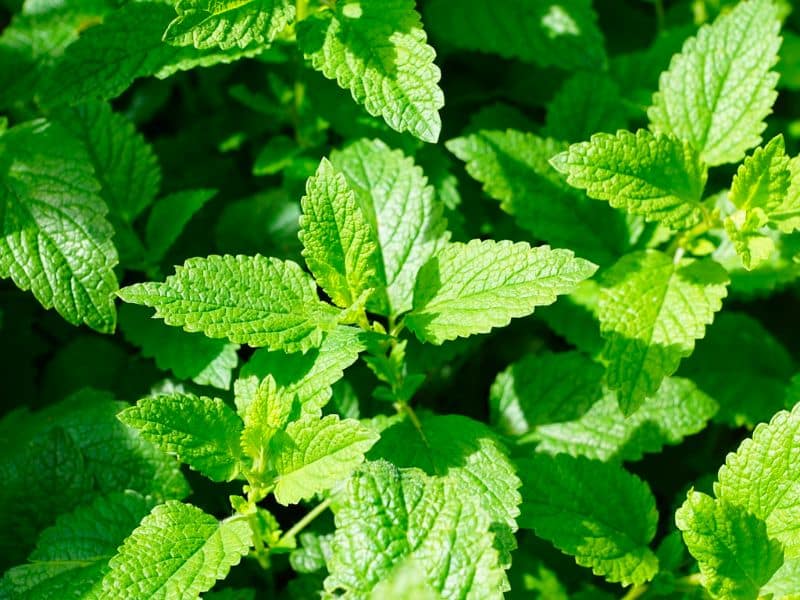
Mint leaves and cucumber slices can help you create a very refreshing beverage. But these two plants are also sworn enemies. Mint plants (Mentha) can be very aggressive in a garden. They quickly spread all over and can take up a lot of space. Mint will also draw a lot of nutrients from the soil that your cucumbers rely on to grow. It is best to keep this herb well away from your cucumber plantation.
Melons
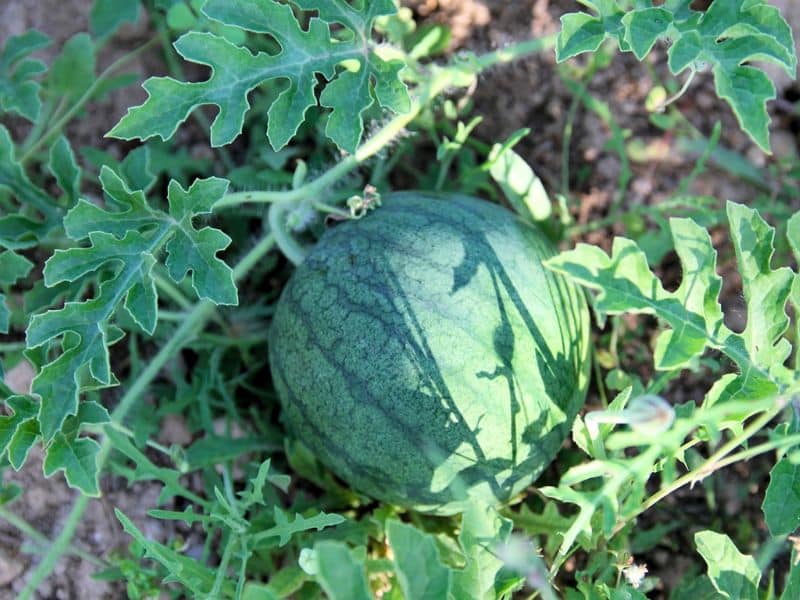
Melons (Cucumis melo) like watermelons, cantaloupes, and honeydews are very similar to cucumbers. Despite these similarities, it is always best to keep these plants separate. They may have the same soil and water requirement but also require the same nutrients for optimal growth. This might affect the overall growth of your cucumbers.
Another issue is usually space. Since both of these are vine plants, they both take up a lot of space on the ground and produce a thick ground cover that might create a breeding ground for pests and diseases.
Final Thoughts
There are lots of tasty vegetables and fragrant herbs that can be combined with cucumber plants. With the right combinations, you can practice natural pest control and get much more out of your small garden.
We hope that this guide made it easier for you to choose the right plants to pair with your cucumbers and that you are now able to get more out of your limited space. We also hope that this guide will help you get a bigger, healthier, and juicier harvest than in previous years.
Up next: Overwatered Cucumber Plant: How to Prevent and Fix Watering Mistakes

